
Renaissance Altar Linen – 100% Irish Linen fabric, which is 60″ wide. It feels like a vintage altar linens as it has similar weight and weave. This linen has a nice hand and body and presses well. Small altar linens and altar Fairlinens are made from this pristine white Irish Linen fabric.
Like this:
Like Loading...

Like the majority of modern ecclesiastical vestments, the cope has its origins in ancient garments. The Cope–Norris, unlike other vestments, is a bit of a mystery. With an unknown origin, its ancestor could be either the garment known as a paenula, the lacuna, or the buyers.
Like this:
Like Loading...

Before the Renaissance, the corporal was often as big as an altar cloth. Since then, it has had smaller dimensions, depending on the size of the altar. It remains essentially a corporal as long as it holds the chalice, the paten, the host, and the ciborium cover. As the corporal is a simple cloth that has the honor of holding the Eucharist, it needs little decoration to complete its job
Like this:
Like Loading...

In the thirteenth century, the papal tiara evolved with a cone shape, growing taller. The peak had an egg shape, and the bottom was adorned with a headband. Styles included vertical or crisscross bands of gold, while the cap remained white linen or cloth of gold. Gems and pearls adorned the tiara. St. Gregory is depicted wearing a thirteenth-century tiara with a vertical band, while Pope Clement IV’s tiara had crisscross bands. Clement, presenting the crown of the Two Sicilies, wore a gold tiara adorned with jewels and fleurons.
Like this:
Like Loading...

The mitre is a white linen cap that is stiffened with parchment–in the modern era, thin plastic or cardboard can be used–and placed upon a stiff linen band. This linen band is then encircled with gold and there can be at the apex a cone of gold. In this century, not only did this special cap receive a name, but the custom of the pope bestowing the mitre on his favorite bishops came into practice. In the twelfth century, the rounded top of the cap began to dip in the middle, due to the binding of a band of gold that ran from front to back.
Like this:
Like Loading...

The amice is the first garment to be put on by a priest. It is worn on the head, while he offers up prayers and intercessions, and then he continues to dress. After the alb is put on, the amice is pushed off his head and worn around his neck as a collar. The long cords of the amice are then tied around the alb under the arms, crossed around the back, and brought back to the front to be tied. All this being said, there are instances when the amice is kept upon the head for practical reasons: such as warmth during a processional or in a particularly drafty church.
Like this:
Like Loading...
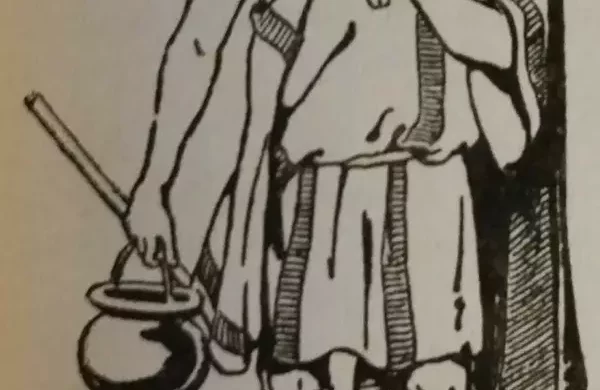
The Pallium-Herbert Norris History The Pallium-Herbert Norris: From the 6th century till the 1st century B.C., the Greeks wore a particular linen or wool garment. People of the working… Read more The Pallium-Herbert Norris →
Like this:
Like Loading...

The Chasuble Percy Dearmer The Chasuble Percy Dearmer: Did you ever look at a poncho and think that it reminded you of something familiar? We know that the poncho,… Read more The Chasuble Percy Dearmer →
Like this:
Like Loading...
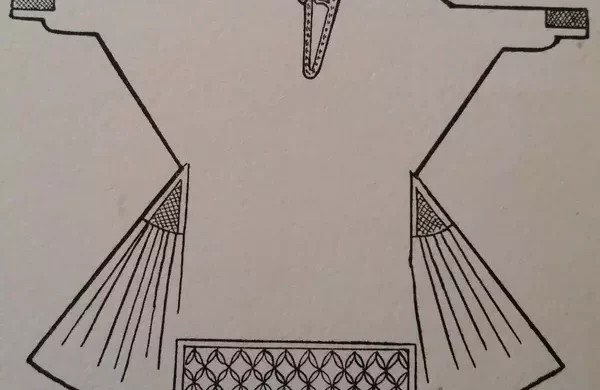
he Alb is a vestment that can trace its origin to six ancient garments: the Kolobus, the Tunica, the Colobim, the Tunica Talaris, the Subucula, and finally the Tunica Alba. These garments were common in Greek or Roman times, some garments being used by both cultures. They are not six manifestations of one garment, but rather six that are distinct enough to make note of the differences.
Like this:
Like Loading...
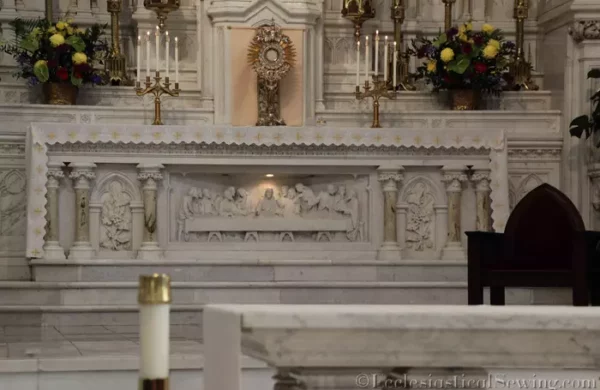
The measurement of making an Altar Fair Linen – The altar height: measure from the top edge of the altar to the floor. Measure the width of the altar from the front to the back. Measure the length of the altar from one side to the opposite side. Optional: measure the hang from the top edge down the side of the Fair Linen to match the length of an altar hanging.
Like this:
Like Loading...
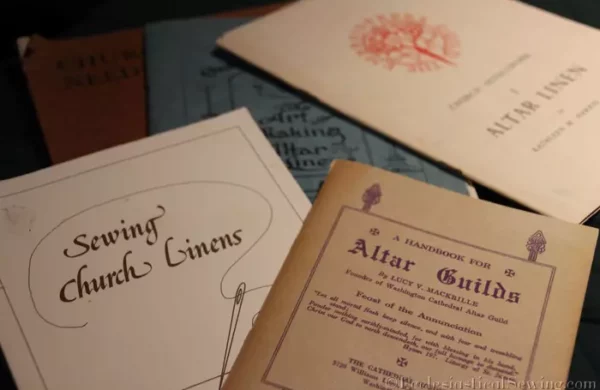
Altar linens serve distinct liturgical functions: Fair Linen covers the altar, Corporal holds vessels, Pall a square linen stiffened with either cardboard or plexiglass. Purificator a small square linen used to wipe the communion vessels during the sacrament, Lavabo Towel dries hands, Credence Cloth covers a side table, Chalice Veil conceals post-communion, Cere Cloth protects from dampness, Dust Cloth safeguards Fair Linen, and Sick Call Set facilitates individual communion.
Like this:
Like Loading...
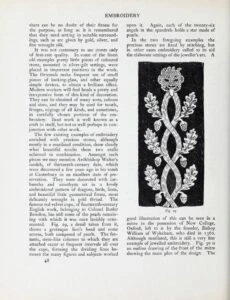
In the late 1800s, Mary Barber created a lovely collection of many examples of Opus Anglicanum.
Like this:
Like Loading...

The design is a simple cross with three rays in each corner between cross bars. The Altar Linen Embroidery Design is available in 4 sizes, for purificators, lavabos, corporal a, and even the corners of a fair linen. This church linen embroidery design will use a few basic stitches such as the split stitch for an outline, and a stem stitch for the rays
Like this:
Like Loading...
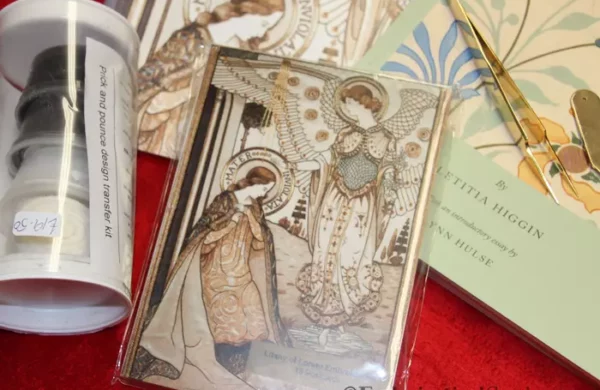
Wishlist of the Royal School of Needlework for years, plans were cancelled by scheduling conflicts. Yet, browsing to their online store provided a silver lining. The Handbook of Embroidery catalog and some enticing embroidery While missing out the classes, the excitement of exploring these ecclesiastical embroidery treasures brings comfort.
Like this:
Like Loading...
Monk Habit Pattern – Benedictine style. It is a simple monk habit that has a high, close-fitting collar, a front placket opening, long 2-piece sleeves, welt pockets on the chest, and at the waist, and side openings to access pant pockets.
Like this:
Like Loading...















You must be logged in to post a comment.